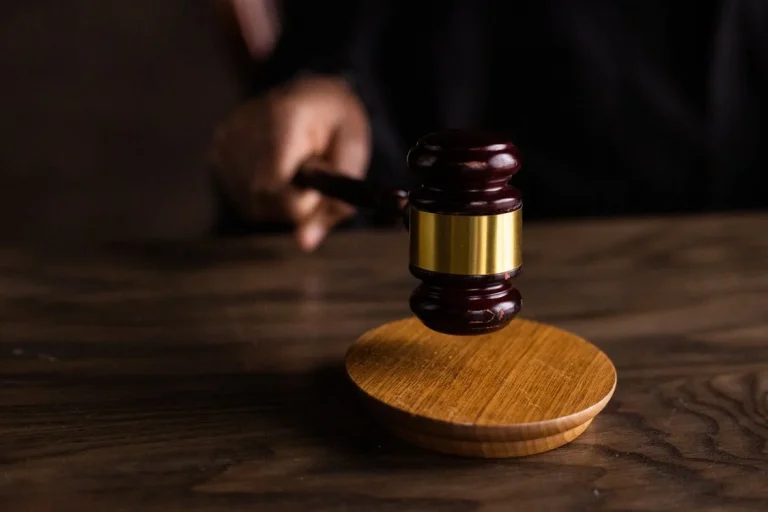Medical negligence has resulted in numerous deaths as well as adverse health effects for the patient over the years. It is a medical practitioner or a doctor’s incompetence by not offering adequate treatment that violates their duties and affects the patients who are their clients.
The underlying explanation behind medical error or medical negligence is that it can be found in different situations where due caution is not taken during the diagnosis, during procedures, even when anaesthesia is injected, etc.
Liability under Law
The role of the medical professional not only occurs when an individual has suffered the injury but also occurs when the injury is the direct product of the doctors. For any damage sustained by the patient, the doctor is not responsible. It is defined by the presence of a duty of care for the patient, which must be determined by the doctor, and on the fact that the patient must show that there is a violation of that duty. If there was no violation or if the injury was not a direct result of the violation, the doctor would not be liable.
Depending on the damage or disability sustained by the injured person, the responsibility of the person doing the wrong may be of 3 forms:
Civil liability– laws advocate suits for damages sustained in the form of compensation.
- The hospital administrators were held to be inept for not keeping the bathroom tidy, resulting in the death of a patient in the bathroom. Compensation of Rs 1 lakh has been granted.[1]
- If there is a civil error against a contractual obligation, then a violation of duty invites judges to intervene to grant a certain remedy for damages.
Criminal liability– Cases of criminal liability are dealt with in the Indian Penal Code, 1860. Sections which deal with this are:
- Section 304a- Causing death by negligence– when a death occurs after treatment, a criminal case is filed under this section for allegedly causing reckless or careless death. Under section 304a of the IPC, anyone who causes the death of any individual by the reckless or careless act that does not constitute a guilty murder shall be punished by imprisonment of up to 2 years, or by fine, or both. Physicians cannot be held criminally liable for an act for that they have undertaken sufficient and equal care.
- Section 80 – An accident in doing a lawful act – Nothing is a crime being committed by mistake or chance and without any criminal intent or awareness when acting lawfully and with due care and prudence. This section saves doctors from criminal responsibility if the act was performed by mistake or act is a result of any misfortune, but the requirement is that there should be no criminal intent to do so and that the act was done lawfully.
- Section 88 – Any act not proposed to cause death, done by consensus in good trust for person’s benefit– Nothing that is not meant to cause death is an offence contrary to any person for whose gain it is completed in good faith and who has consented, either explicitly or indirectly, to bear that harm or to take the risk of that harm under the basis of any harm that the person may cause. Volenti non-fit injuria is the maxim that speaks when a citizen, with his or her consent, makes a decision and cannot demand compensation whether he or she is injured.
Vicarious liability – the concept is based on the Latin maxim “Qui facit per allium facit per se” which describes the individual acting through other acts in his or her interest.
- The patient only needs attentive and adequate treatment, if the hospital staff are incompetent in conducting their prescribed work, then the hospital will be held responsible for the negligent actions of physicians for the particular performance of such operations. [2]
- There is a breach of the duty of care in the course of the procedure, or if the patient is under the care of a hospital or medical professional, he or she shall be held vicariously liable for any negligence and shall be liable in the form of compensation for damages.
Other Laws on Medical Negligence
1.Consumer Protection Act of 1986
- The judgment in Indian Medical Association vs. VP Shantha case, which described the medical treatment as a “service” that was protected by the Act and also explained that a person requiring medical attention could be considered a customer if certain conditions have been met:
- The service offered was not free of charge or with a minimum registration fee.
- If free, the charges were forgiven due to the inability of the patient to pay.
- The facility was in a private hospital, where all patients were paid.
- Any service rendered has been paid by the insurance provider.[3]
- This states that some groups of patients also are entitled, as a breach of the contract, to sue health care providers for compensation under the Consumer Protection Act, 1986. Doctors and hospitals have become aware that as long as patients pay, all patients are clients.
- Cases that do not fall under the scope of the consumer protection act, for example, where facilities have been given free of charge in a government hospital may be brought before criminal courts where a medical practitioner may be charged under section 304-a of the IPC dealing with fatalities caused by negligence.
- The Supreme Court ruled that if a practitioner had practiced the procedure with proper diligence and had been qualified in the areas concerned, a single mistake would not be adequate to constitute incompetence.[4]
- As per the consumer protection bill 2019, the elimination of “healthcare” from the list of services in 2019 means that patients can no longer approach a consumer court to resolve medical negligence concerns or to file lawsuits against doctors there.
- Patients or their family members now have recourse to higher courts for medical negligence
- The Medical Council of India (Indian Medical Council Rules) 1957[5] there is a redress process that can allow for disciplinary action by efficient investigation procedures against violent specialists.
- Abuse of practitioners who are wrongly accused of negligence has been prohibited by the Supreme Court, which provided guidelines for the criminal prosecution of doctors (rule 4 of order xviii of the Consumer Protection Act, 1986).
- The IMC Regulations, 2002, controls professional misconduct by medical practitioners. The MCI and the appropriate State Medical Councils are empowered to take administrative measures to revoke or suspend the name of the doctor indefinitely.
- However, professional misconduct is a general concept that may or may not involve medical negligence within its scope.
- Bolam test
- The Bolam test plays a key role in determining the degree of negligence of a doctor who is himself an expert in his field of service, but in some situations has committed an act involving medical negligence.
- In some cases, medical law is of the view that the Bolam test states that if the practitioner complies with the standards of the knowledgeable body of medical opinion, he is not responsible.
- A specialist in this area shall be selected who shall carry out a reasonable examination of the conduct of the alleged doctor who, if his findings are made in favour of the doctor, he shall be clean and free from his obligations.
- This principle was derivative from the case of Bolam v. Friern hospital management committee[6].
- Analysts found out that the Indian Bolam test is one of many tests for dealing with negligence, the test is only true if there is a condition that results in a neglect of duty by a medical practitioner.
Landmark Judgment on Medical Negligence
1.Kunal Saha Vs Advanced Medical Research Institute 2013
It was sued in 1998 on allegations of medical incompetence by the AMRI Hospital and three doctors. The wife suffered from opioid allergy and the doctors were careless in the use of medications, which further worsened the illness of the woman and finally led to her demise. The final verdict was issued by the Supreme Court on 24 October 2013 and Rs 6.08 Crore was awarded for the death of his wife.
2.Krishan Rao Vs Nikhil Super Speciality Hospital 2010
The malaria inspector lodged a lawsuit against the hospital for inadequate care of his wife. Owing to the inaccurate treatment provided by the doctor, his wife was wrongly treated for typhoid fever instead of malaria. The court passed judgment for compensation for Rs 2 lakhs. The principle of “Res Ipsa Loquitor” was applied in this case and the plaintiff was given punishment.
3.Kusum Sharma & Ors Vs. Batara Hospital and Medical Research Centre 2010
The rule of negligence must be applied based on the facts and situations of the particular case. No one should overlook the fact that medicine is an emerging science, and that there is no precise effect for every individual. Operations entail a certain measured danger that cannot be denied as a consequence of a complication in the procedure if any danger is taken, the doctors cannot be held liable for negligence as the patient himself has acknowledged the risk involved in the operation.
4.Jacob Mathew Vs State of Punjab 2005
The Supreme Court held that the physicians had been educated in a condition where they had to make decisions where there is a greater risk in the process in certain cases, but greater chances of success and, at another point, less risk but higher chances of failure. The decision following the course of the case would then depend on the facts and circumstances of the case.
Reference :-
[1] Mr. M Ramesh Reddy v. State of Andhra Pradesh, 2003 (1) CLD 81 (AP SCDRC)
[2] Aparna Dutt .V. Apollo Hospital Enterprises Ltd ,2002 ACJ 954 (Mad. HC)
[3] IMA VS. V.P. Shanta And Ors (1995) CPJ I (SC)
[4] Dr. Laxman Balkrishna Joshi v Dr. Trimbak Bapu Godbole, AIR 1969 SC 128
[5] The Indian Medical Council Act, 1956 (102 OF 1956)
[6] Bolam v. Friern hospital management committee [1957] 1 WLR 582









